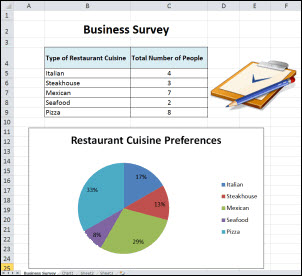Prepare students for the future by teaching them spreadsheet skills. A spreadsheet is an electronic ledger commonly used by people in the workplace to store information and manipulate it to make informed decisions. The worksheet is divided into alphabetic columns and numeric rows. One of the most popular spreadsheet programs is Microsoft Excel.
Why do you need to teach spreadsheet skills?

Spreadsheet skills allow students to organize, calculate, graph, and analyze data. These skills provide a critical foundation in preparation for future studies and the workplace. Today, many careers require knowledge of how to use a spreadsheet program.
Moreover, integrating the use of spreadsheets into curriculum targets mathematical learning objectives. By having your students organize data into a worksheet and manipulate it, your students acquire essential skills. For example:
- use computational strategies to calculate data
- generate graphical representations of data
- compare sets of data using tables, graphs, and models
- examine patterns in data using charts and trend lines
- apply mathematical reasoning to investigate a problem
- apply problem solving strategies to develop a solution
- make connections to the real world applications of mathematics
Spreadsheet Skills and Product Ideas
Using spreadsheets helps students make the connection to the real world application of mathematics. Students can learn spreadsheet skills by completing a variety of projects:
|
|
|
When selecting a product you want students to create using a spreadsheet program it is essential to determine the technology skills that are required. In addition, you must consider the students’ grade level and previous computer experience prior to selecting a task. Spreadsheet skills can be grouped into basic and advanced levels of difficulty.
Basic Spreadsheet Skills:
|
Advanced Spreadsheet Skills
|
Incorporate spreadsheet skills in the classroom to create essential learning experiences for your students. Prior to beginning a lesson, consider the level of difficulty of the task and the background knowledge of your students. This will help you to select a product that is developmentally appropriate.